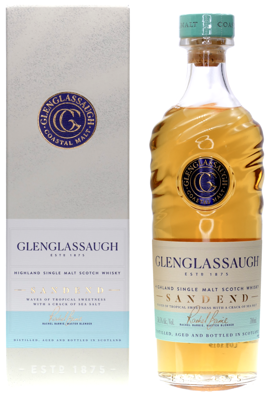|
|
Release Notes
Glenglassaugh Sandend is inspired by the crescent beach of Sandend Bay where the distillery resides. Enriched in bourbon, sherry and manzanilla casks, over time the lush flavour of Glenglassaugh Sandend brightens into waves of tropical sweetness, infused with a crack of sea salt.
Glenglassaugh
3rd Party Tasting Notes
Colour: Summer Gold
Nose: Soft buttery vanilla ice-cream drenched in tropical fruit, with chocolate and a touch of sea salt.
Taste: Waves of salted-caramel with an effervescent burst of pineapple, cherry and grapefruit, enlivened by the ocean shore.
Nose: Soft buttery vanilla ice-cream drenched in tropical fruit, with chocolate and a touch of sea salt.
Taste: Waves of salted-caramel with an effervescent burst of pineapple, cherry and grapefruit, enlivened by the ocean shore.
Glenglassaugh
The Distillery: Glenglassaugh
| Established: 1875 |
| Silent since: False |
| Address: Portsoy |
| → website |
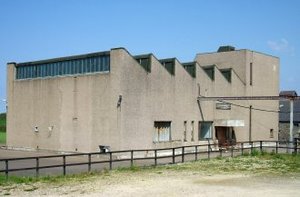
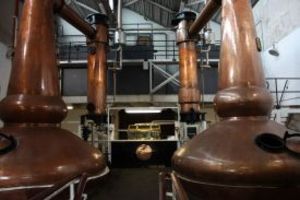
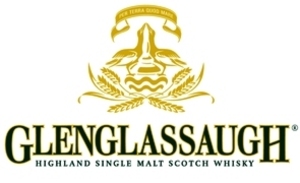
Glenglassaugh is a 'coastal' distillery, founded in 1875 and located on the north coast of Speyside near Glen Deveron and Banff. The rivers Spey and Deveron flow into the North Sea nearby. One of the most remarkable characteristics of the Glenglassaugh whisky distillery is probably the fact that it has been silent for more than half of its life.
Construction of the Glenglassaugh distillery began in 1873 on Craig Mills farm and was finished in 1875. It was built by the Glenglassaugh Distillery Company, which was owned by local wine & spirit merchant James Moir. He started a partnership to make whisky with local coppersmith Thomas Wilson and his nephews Alexander and William Morrison.
Getting the Glenglassaugh distillery up and running for the first time required an investment of circa GBP 10,000. That seems like a modest amount, especially if one compares it to the GBP 5,000,000 that was required a little over a century later when the Scaent Group (an energy company from abroad) bought the mothballed distillery from the Edrington Group in 2008. In fact, refurbishing the distillery that hadn't been used since 1986 cost another two million pounds. The new owners of Glenglassaugh could buy some old stocks, but mostly they had to start again from scratch.
But I'm getting ahead of myself now - let's have another look at history. When the founders built the distillery their idea was to supply bottled single malt whisky under the label of "James Moir & Alexander Morrison". However, much of the whisky they produced was sold on for blending to William Teacher & Sons in Glasgow. After Moir and Wilson had passed away, Alexander Morrison decided to re-equip the distillery with brand new stills, washbacks and barley separators between 1887 and 1892.
When William Morrison died in 1892, Alexander first sold the distillery to Robertson & Baxter, who then sold it on in the same year to the Highland Distilleries Co. Ltd. for GBP 15,000. After the new owners took over the production rose to 110,000 gallons by 1898. However, production decreased again after the end of 'the whisky boom'.
It's difficult to get precise details about the history of Glenglassaugh - their website is filled with lots of romantic stories from the early days when the distillery was founded, but it's very hard to say with any degree of certainty what happened between 1908 (when Glenglassaugh was closed) and the late 1950's when reconstruction began. Some sources claim that the distillery was revived shortly between 1931 and 1936 but according to Stuart Nickerson there isn't actually any proof for that. So, the only thing I'm fairly certain about is the fact that Glenglassaugh started producing malt whisky again in 1960 after the capacity was doubled by installing a pair of new, larger stills. This would most likely have had a profound effect on the style of the spirit that was produced at Glenglassaugh, but after half a century very few people would worry.
In the words of Aussie malt maniac Craig Daniels: "Glenglassaugh was substantially reconstructed and capacity doubled (through the unusual yet classically utilitarian device of merely doubling the capacity of the existing stills) in between 1957 and 1959 and after the work was completed it was regarded as one of the best designed distilleries in Scotland, although you'd wonder what the traditionalists would've thought as it was lore that you didn't muck around with the design of your stills, but maybe the size and configuration of your stills is not considered significant when you're in the bulk malt for blending market. It is pointless to speculate whether the change in the size of the stills impacted on the profile of the final spirit as you'd need to have a stack of empirical evidence to hold your ground on any side of the argument."
Between 1960 and 1986 Glenglassaugh produced malt whiskies for the blending market; their malt whisky was a component in the Cutty Sark and Famous Grouse blends. However, like almost two dozen other malt whisky distilleries, Glenglassaugh suffered from the decline that plagued the Scotch whisky industry in the early 1980's. Glenglassaugh was mothballed in 1986 as one of the last distilleries to be affected by the recession. But while some other distilleries that had been temporarily closed were re-opened in the 1990's, it seemed like Glenglassaugh was closed for good.
The Glenglassaugh malt whisky was popular with blenders, so there was no real need to push it as a single malt whisky. As a result, there have been only four (semi-) official bottlings ever of Glenglassaugh. Independent bottlings have been fairly scarce too; in 2009 there were less than 50 bottlings on the MMMonitor. Most releases from previous owners scored in the upper 80's... Glenglassaugh whisky from 1986 in the MacPhail's Collection
The (semi-) official bottlings were a version without an age statement and a 12 years old expression that were available in the late 1970's until the early 1990's, a fabulous 'Family Silver' bottling from 1973 (bottled in 1998) and a 19 years old release (bottled in 2006) - all of them released by Highland Distillers. Independent bottlings have been released by various independent bottlers, including Cadenhead's, Gordon & MacPhail, Douglas Laing, Dewar Rattray, Signatory Vintage and the Scotch Malt Whisky Society.
Glenglassaugh under Scaent Group (2008 - 2013)
Since 1986, the owners Edrington Group had no plans for the revival of the distillery. However, in 2008 Glenglassaugh was purchased by the Scaent Group (an energy company) for the friendly sum of five million pounds. Ah, and to think you could buy (or build) a distillery for as little as 10,000 pounds a century ago... In fact, that was exactly the sum that was required for the construction of Glenglassaugh in 1875.
I'm not sure why the Scaent Group felt like adventuring into the whisky world, but they refurbished Glenglassaugh and began hiring staff in 2008. Despite the credit crisis that hit Europe shortly after the acquisition, the brand new managing director Stuart Nickerson made great progress in getting Glenglassaugh up to steam again.
Because the distillery had been mothballed more than twenty years ago, a lot of the original equipment had to be replaced. Equipment like the stills, the malt mill, the grist case, the mash tun and the washbacks could still be used. However, the boiler, the boiler chimney, the pumps and the heat exchangers of Glenglassaugh had to be replaced. So, most of the stuff that matters is still original.
Scaent Group managed to obtain modest stocks of mature Glenglassaugh whisky from Edrington. Thanks to this purchase, the new owners were soon able to offer a 21yo, a 30yo and even a 40yo official bottling. These bottlings performed quite well - but they were made by another crew using other raw materials and equipment, so that doesn't say a lot about the style of the malt whisky that is being produced by the new owners.
Because Scotch whisky has to be matured for at least three years (a minimum set by British law), the newly distilled Glenglassaugh spirit couldn't be sold as 'whisky' until 2011. Nevertheless, the Scaent Group couldn't wait and wanted to make some money as soon as possible. So, they decided to release the immature product they distilled themselves already in 2009; "The Spirit Drink That Dare Not Speak Its Name". Despite the poor quality of the spirit, the new owners decided to attach some "premium" price tags to it. That doesn't bode well for the quality / price ratio of the new generation of Glenglassaugh malt whisky - I won't be taking any chances with spending my hard earned money.
Glenglassaugh under Benriach (2013 - ????)
On March 22, 2013 Benriach sent a press release about their acquisition of the Glenglassaugh distillery. Excellent news as far as I'm concerned - When Billy Walker & friends bought Benriach in 2004 they managed to quickly re-establish the brand and build on that. Their acquisition of Glendronach was another success story.
In the New Millenium
Construction of the Glenglassaugh distillery began in 1873 on Craig Mills farm and was finished in 1875. It was built by the Glenglassaugh Distillery Company, which was owned by local wine & spirit merchant James Moir. He started a partnership to make whisky with local coppersmith Thomas Wilson and his nephews Alexander and William Morrison.
Getting the Glenglassaugh distillery up and running for the first time required an investment of circa GBP 10,000. That seems like a modest amount, especially if one compares it to the GBP 5,000,000 that was required a little over a century later when the Scaent Group (an energy company from abroad) bought the mothballed distillery from the Edrington Group in 2008. In fact, refurbishing the distillery that hadn't been used since 1986 cost another two million pounds. The new owners of Glenglassaugh could buy some old stocks, but mostly they had to start again from scratch.
But I'm getting ahead of myself now - let's have another look at history. When the founders built the distillery their idea was to supply bottled single malt whisky under the label of "James Moir & Alexander Morrison". However, much of the whisky they produced was sold on for blending to William Teacher & Sons in Glasgow. After Moir and Wilson had passed away, Alexander Morrison decided to re-equip the distillery with brand new stills, washbacks and barley separators between 1887 and 1892.
When William Morrison died in 1892, Alexander first sold the distillery to Robertson & Baxter, who then sold it on in the same year to the Highland Distilleries Co. Ltd. for GBP 15,000. After the new owners took over the production rose to 110,000 gallons by 1898. However, production decreased again after the end of 'the whisky boom'.
It's difficult to get precise details about the history of Glenglassaugh - their website is filled with lots of romantic stories from the early days when the distillery was founded, but it's very hard to say with any degree of certainty what happened between 1908 (when Glenglassaugh was closed) and the late 1950's when reconstruction began. Some sources claim that the distillery was revived shortly between 1931 and 1936 but according to Stuart Nickerson there isn't actually any proof for that. So, the only thing I'm fairly certain about is the fact that Glenglassaugh started producing malt whisky again in 1960 after the capacity was doubled by installing a pair of new, larger stills. This would most likely have had a profound effect on the style of the spirit that was produced at Glenglassaugh, but after half a century very few people would worry.
In the words of Aussie malt maniac Craig Daniels: "Glenglassaugh was substantially reconstructed and capacity doubled (through the unusual yet classically utilitarian device of merely doubling the capacity of the existing stills) in between 1957 and 1959 and after the work was completed it was regarded as one of the best designed distilleries in Scotland, although you'd wonder what the traditionalists would've thought as it was lore that you didn't muck around with the design of your stills, but maybe the size and configuration of your stills is not considered significant when you're in the bulk malt for blending market. It is pointless to speculate whether the change in the size of the stills impacted on the profile of the final spirit as you'd need to have a stack of empirical evidence to hold your ground on any side of the argument."
Between 1960 and 1986 Glenglassaugh produced malt whiskies for the blending market; their malt whisky was a component in the Cutty Sark and Famous Grouse blends. However, like almost two dozen other malt whisky distilleries, Glenglassaugh suffered from the decline that plagued the Scotch whisky industry in the early 1980's. Glenglassaugh was mothballed in 1986 as one of the last distilleries to be affected by the recession. But while some other distilleries that had been temporarily closed were re-opened in the 1990's, it seemed like Glenglassaugh was closed for good.
The Glenglassaugh malt whisky was popular with blenders, so there was no real need to push it as a single malt whisky. As a result, there have been only four (semi-) official bottlings ever of Glenglassaugh. Independent bottlings have been fairly scarce too; in 2009 there were less than 50 bottlings on the MMMonitor. Most releases from previous owners scored in the upper 80's... Glenglassaugh whisky from 1986 in the MacPhail's Collection
The (semi-) official bottlings were a version without an age statement and a 12 years old expression that were available in the late 1970's until the early 1990's, a fabulous 'Family Silver' bottling from 1973 (bottled in 1998) and a 19 years old release (bottled in 2006) - all of them released by Highland Distillers. Independent bottlings have been released by various independent bottlers, including Cadenhead's, Gordon & MacPhail, Douglas Laing, Dewar Rattray, Signatory Vintage and the Scotch Malt Whisky Society.
Glenglassaugh under Scaent Group (2008 - 2013)
Since 1986, the owners Edrington Group had no plans for the revival of the distillery. However, in 2008 Glenglassaugh was purchased by the Scaent Group (an energy company) for the friendly sum of five million pounds. Ah, and to think you could buy (or build) a distillery for as little as 10,000 pounds a century ago... In fact, that was exactly the sum that was required for the construction of Glenglassaugh in 1875.
I'm not sure why the Scaent Group felt like adventuring into the whisky world, but they refurbished Glenglassaugh and began hiring staff in 2008. Despite the credit crisis that hit Europe shortly after the acquisition, the brand new managing director Stuart Nickerson made great progress in getting Glenglassaugh up to steam again.
Because the distillery had been mothballed more than twenty years ago, a lot of the original equipment had to be replaced. Equipment like the stills, the malt mill, the grist case, the mash tun and the washbacks could still be used. However, the boiler, the boiler chimney, the pumps and the heat exchangers of Glenglassaugh had to be replaced. So, most of the stuff that matters is still original.
Scaent Group managed to obtain modest stocks of mature Glenglassaugh whisky from Edrington. Thanks to this purchase, the new owners were soon able to offer a 21yo, a 30yo and even a 40yo official bottling. These bottlings performed quite well - but they were made by another crew using other raw materials and equipment, so that doesn't say a lot about the style of the malt whisky that is being produced by the new owners.
Because Scotch whisky has to be matured for at least three years (a minimum set by British law), the newly distilled Glenglassaugh spirit couldn't be sold as 'whisky' until 2011. Nevertheless, the Scaent Group couldn't wait and wanted to make some money as soon as possible. So, they decided to release the immature product they distilled themselves already in 2009; "The Spirit Drink That Dare Not Speak Its Name". Despite the poor quality of the spirit, the new owners decided to attach some "premium" price tags to it. That doesn't bode well for the quality / price ratio of the new generation of Glenglassaugh malt whisky - I won't be taking any chances with spending my hard earned money.
Glenglassaugh under Benriach (2013 - ????)
On March 22, 2013 Benriach sent a press release about their acquisition of the Glenglassaugh distillery. Excellent news as far as I'm concerned - When Billy Walker & friends bought Benriach in 2004 they managed to quickly re-establish the brand and build on that. Their acquisition of Glendronach was another success story.
In the New Millenium
- 2005 - A 22yo official bottling is released by the owners at the time, the Edrington Group.
- 2008 - Scaent Group buys the Glenglassaugh distillery and 21yo, 30yo and 40yo bottlings are released. The distillery is operated through Glenglassaugh Distillery Company.
- 2009 - Freshly distilled Glenglassaugh whisky is not available yet, but the new owners were able to provide fans with (sort of) an alternative to mature whisky - "The Spirit Drink That Dare Not Speak Its Name".
- 2010 - The 21yo OB is replaced with a 26 years old Scottish single malt whisky. Both bottlings were made with old stocks that the new owners purchased from Edrington. At the same time they released some more freshly distilled spirits at (rather preposterous) "premium" prices. This sort of carpetbaggery doesn't bode well for the coming years when the new owners will legally be able to sell their product as mature Scotch whisky.
- 2013 - The Glenglassaugh Distillery Company is acquired by the Benriach Distillery Company Ltd. Apparently, the name of the seller was 'Lumiere Holdings' from Amsterdam. I'm not sure if that is an entity of the Scaent Group or if they had already sold the distillery to a new investor earlier.
Trivia:
- The Glenglassaugh malt whisky distillery has been silent for more than half of its lifetime. So, in 2008 the old Glenglassaugh distillery had worked for only 58 years.
- The Glenglassaugh distillery has a cast iron mash tun and 6 washbacks, although 2 of them are not connected. When the new owners took over Glenglassaugh in 2008, the four wooden washbacks were used again, but not the two others (which were made out of stainless steel).
- Glenglassaugh was built on a piece of property known as "Craig's Mills Farm" or "Craigmills farm". The name probably refers to two water powered mills and one wind-powered mill on the site. The base of the windmill was still part of the Glenglassaugh distillery complex when the distillery was refurbished in 2008.
- In 2009 Glenglassaugh started to experiment with the production of (mildly) peated whisky.
- An earlier version of this profile stated that Glenglassaugh fell silent from 1907 to 1931 and operated again until 1936. However, Managing Director Stuart Nickerson informed me that there has been no actual proof of any operation in the 1930's. So, the actual situation around Glanglassaugh at the time is debated.
from Malt Madness
The Owner: BenRiach Distillery Company
| Established: 2003 |
| Silent since: False |
| Address: Glenbervie Business Park, Larbert, Stirlingshire FK5 4RB, UK |
| → website |
In 2008 BenRiach Distillery Co.Ltd. purchased Glendronach distillery once again from Pernod Ricard"s Chivas Brothers.
The company also produces 2 export-only blended Scotch Whisky brands: Clan Murray and Glen Bervie.
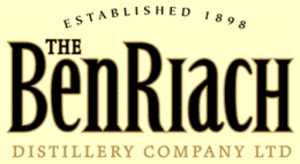
BenRiach Distillery Co.Ltd. was founded by Scotch whisky industry veteran Billy Walker and South African Intra Trading (Geoff Bell and Wayne Keiswetter). The consortium bought the mothballed Benriach distillery from Pernod-Ricard"s Chivas Brothers in 2004 and reopened it under the slightly tweaked name "BenRiach".
from The Internets
